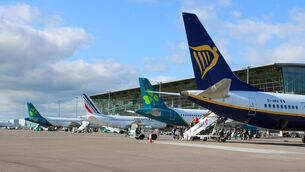Pace of growth in US slows

Gross domestic product grew at a 1.5% annual rate, in line with the 1.6% median forecast of economists, US commerce department data showed yesterday.
Excluding the biggest swing in inventories in four years, the pace of growth was 3% compared with 3.9% in the previous three months.
Household purchases, buoyed by job and income gains, will probably continue to underpin the world’s largest economy even as weaker demand from overseas customers holds back exports and manufacturing.
The quick re-balancing of stockpiles to be more in line with domestic demand heading into the holiday season indicates factory production will soon stabilise, eliminating a source of weakness.
“This number is stronger than it looks,” said Stuart Hoffman, chief economist at PNC Financial Services.
“Fourth-quarter economic growth should be faster on the basis of a still-good holiday season, good housing, good consumer spending.”
The US economy grew at an average 2.3% pace in the first half of the year as a 3.9% surge in the second quarter more than made up for a first-quarter slowdown caused by frigid weather, a labour dispute at west coast ports and cutbacks in the energy industry. GDP expanded 2.4% in all of 2014.
A separate report from the labour department yesterday showed the number of applications for unemployment benefits were little changed last week, hovering near the lowest levels in four decades.
Jobless claims rose by 1,000 to 260,000 in the period ended October 24.
The commerce department third-quarter growth estimate showed household purchases, which account for almost 70%, rose at a 3.2% annual pace compared with a 3.6% pace in the prior three-month period.
After-tax incomes adjusted for inflation climbed at a 3.5% annual rate, almost three times the 1.2% gain in the prior three months.
That allowed the saving rate to increase to 4.7% from 4.6%, indicating consumers have plenty of firepower to continue to drive growth.
Stable job growth in 2015 and cheaper prices at the pump have helped cushion Americans’ pocketbooks, supporting the household spending that makes up the biggest share of US growth.
While payrolls advanced at a slower pace than forecast in August and September, the pace of hiring this year has averaged 198,000 a month.
















